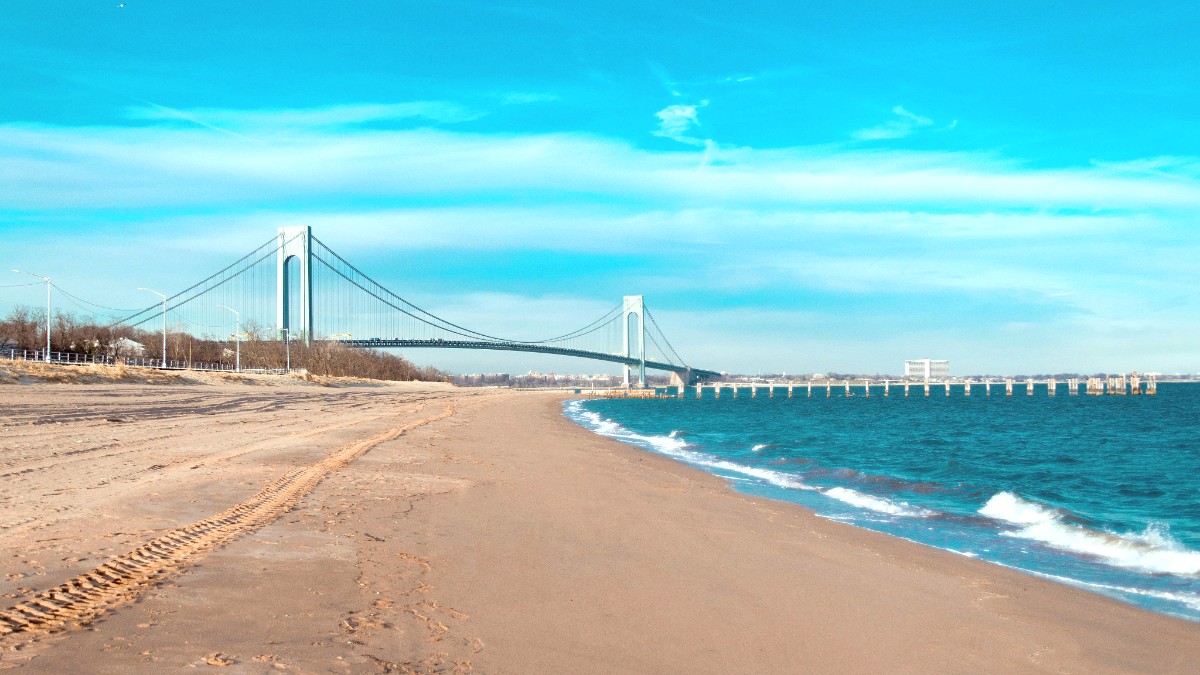
New York City, USA
Spring (April-May): Moderate temperatures, typically 45-65°F (7-18°C). Moderate precipitation, low humidity. Parks and gardens bloom, offering scenic beauty.
Summer (June-August): Warm and often humid, 70-85°F (21-29°C). Heat waves can push temperatures higher. Thunderstorms are common, often with brief but heavy downpours.
While a direct hurricane hit is rare, the New York City area can feel the effects of remnants from hurricanes or tropical storms, specifically during late summer and early autumn (August-October). These systems can bring heavy rain, strong winds, and coastal flooding to low-lying areas.
Summer heat waves can lead to heat advisories, warning of dangerous conditions. During these times, staying hydrated, seeking air-conditioned spaces, and limiting strenuous outdoor activity are important. Winters can bring significant cold snaps and blizzards, impacting transportation and causing closures.
June-August, December
Warm weather for beaches, outdoor festivals. December offers festive atmosphere.
More crowds, higher accommodation prices. Summer can bring high humidity and heat waves.
April-May, September-October
Optimal weather for outdoor activities. Fewer crowds, reasonable prices. Beautiful fall foliage/spring blooms.
Weather can be variable; early spring/late autumn days may be chilly. Layered clothing is a good idea.
January-March, November
Lowest prices for flights and lodging. Significantly fewer tourists. Opportunities for winter activities with snow.
Cold weather. Be ready for potential snowstorms or blizzards that disrupt travel plans. Some outdoor attractions may have reduced hours or close.
Spring and Autumn climate conditions for exploring the Staten Island Greenbelt, cycling along the boardwalk, or enjoying the many parks. Mild temperatures and lower humidity make these activities more pleasant.
Summer (June-August) climate for swimming and sunbathing at public beaches. The boardwalk provides enjoyment for walks during any pleasant weather. The free Staten Island Ferry ride and general sightseeing are available year-round. Enjoy views from the outdoor deck in spring, autumn, and pleasant summer days, or from inside the ferry's heated cabin during colder months.
Staten Island Museum, perfect for any time of year.
Snug Harbor Cultural Center offers respite on hot or cold days.
A great option for exploring history regardless of weather.
Live performances offer indoor entertainment year-round.
Public libraries provide a warm or cool space for relaxation.
These regulations vary significantly based on your nationality. Always consult your home country's foreign affairs department and official U.S. Government websites for the most current information.
Regulations vary based on your nationality. Always check official sources for the latest policies.
Upon arrival in the United States, be ready to present specific documents to U.S. Customs and Border Protection (CBP) officers.
Staten Island offers options for various budgets, though it generally aligns with New York City's reputation for being more expensive than many other U.S. Destinations.
Prioritizing your health and safety during any trip is wise.
No specific vaccinations are required for U.S. Entry for most travelers. Consult your doctor for routine vaccination updates.
Pollen counts can be high in spring and fall. Carry your usual allergy medication.
Stay hydrated, seek shade, and limit strenuous outdoor activity during summer heat waves.
Hospitals & Urgent Care:
Staten Island has a robust healthcare system including major hospitals like Staten Island University Hospital and Richmond University Medical Center. Numerous urgent care clinics cater to non-life-threatening conditions.
Major pharmacy chains (CVS, Walgreens) are widely available for prescriptions and over-the-counter medications.
Tap water is safe to drink. U.S. Food safety standards are high; look for good health inspection grades at dining spots.
For police, fire, or medical emergencies, dial 911 (free call). Clearly state your emergency and location.
For non-life-threatening issues, general information, or complaints, dial 311.
Have your home country's embassy or consulate contact information for assistance with lost passports or legal issues.
Staten Island generally has lower crime rates compared to other New York City boroughs. It is considered a safe place for tourists. Exercise standard urban precautions.
Travel insurance is highly recommended for any international trip. A comprehensive policy should cover aspects of your journey.
Medical costs in the U.S. can be very high. Ensure your policy covers doctor visits, hospital stays, and emergency medical evacuation. Consider SafetyWing or Insubuy.
Covers financial losses if your trip is unexpectedly cut short or canceled due to unforeseen circumstances (illness, family emergency, natural disaster). Check policies from World Nomads.
Provides compensation if your checked luggage is lost, delayed, or stolen. Review policy details carefully to understand coverage and exclusions.